A book to read: TO END ALL WARS by Adam Hochschild
The newsletter should just be an Adam Hochschild fan site. My favorite historian has already been featured in newsletters here and here and here. There is so much more to say about the man and his books and I haven’t even read his latest yet.
Like most books about WWI, Hochschild’s TO END ALL WARS: A Story of Loyalty and Rebellion, 1914-1918 tells the story of alliances, Germany’s military build up, the assassination of Franz Ferdinand (the Austrian duke, not the band), trench warfare, and machine guns.
But unlike most books on military history, this book tells the stories of pacifists and critics right alongside tales of battlefield heroics. Hochschild brilliantly weaves all these stories together. He tells one overarching story by telling hundreds of stories, mixing of his own words and perfectly chosen quotes from his vast array of historical characters. Reading his books and bearing witness to how he brings history alive is such a joy. I’m always inspired to be a better teacher and a better teller of stories after reading Hochschild.
In TO END ALL WARS, he tells the story about Emmeline Pankhurst, who went “from socialist to rock-throwing suffragette to staunch prowar patriot…” When war broke out, she set aside her civil disobedience for woman’s suffrage and instead worked WITH the government to encourage women to work in factories and support the war.
“If you go to this war and giver your life, you could not end your life in a bitter way - for to give one’s life for one’s country, for a great cause, is a splendid thing.” —Emmeline Pankhurst’s speech to Plymouth crowds.1
Her daughter Sylvia Pankhurst however, did NOT go along with her mother’s switcharoo. She opposed the war and remained estranged from her mother until Emmeline’s death.
Sylvia’s lover James Keir Hardie is another anti-war politician who figures into the book. See what I mean about weaving characters together? Most people don’t know which pacifists were sleeping together but Hochschild knows!
In addition to unearthing dating histories, Hochschild does a masterful job finding brilliant, sparkly quotes from history. You know how history textbooks always find the most boring and hard-to-understand historical quotes to showcase in their “primary source” boxes? Not Hochschild. He finds the juicy quotes, the ones that seem to speak across centuries and still ring true.
As I read the book, I found myself flagging such quotes. Then, I turned all my flagged pages into a week-long assignment for my students.
A lesson to teach: WWI and quote analysis
My students often have a hard time analyzing quotes. In their essays, I want them to explain what a quote means, contextualize it, connect it to the rest of the document where the quote came from, and then link it to their thesis. These are no small tasks for my students, many of whom struggle to read and write.
I needed to break down quote analysis into a smaller chunk for my students. This is how I did it:
First, I combed through Hochschild’s TO END ALL WARS to find some historical characters. I found eight such characters and wrote a 1-2 sentence summary about them. Then, I made a list of 3 or 4 or 5 quotes that encompassed their beliefs about WWI. Here is the document with the people and their quotes. As an example, here is my “historical character” sheet on Kipling:
Then, I broke my class up into eight groups of 3 or 4 students. I assigned each group a person and gave everyone in that group the historical character sheet about that person. Student groups were instructed to read their character sheet and pick a quote, but each group member needed to pick a different quote, so they had to talk a bit about who got what quote.
Once everyone has their own quote, they work individually. Each student looks up unknown words and I check in to make sure that everyone understands their quote. Then, each student (not each group! Each student!) makes a poster with the historical person’s name, the quote, and two pictures that represent the quote (NOT a picture of the person! The picture needs to help other people understand the quote. A grainy black and white Wikipedia image of some bald guy is not helpful.)
Next students write a speech. A short one. Their speech needs to be a couple of sentences about their person, a few sentences explaining their quote, and a few sentences that link ALL the quotes together to discuss the person’s opinion about WWI. Here is the assignment sheet and rubric for students.
Creating the poster and speech takes my students about three or four days. Then we spend the next three or four days on presentations. I don’t have every student present to the class (this gets real boring, real quick), so here’s how I do presentations:
Assign each person in each of the eight groups a number: 1, 2, 3, or 4.
Have all the 1s move to a space in the room with their poster. They are going to present first (it’s usually best to reserve a bigger room in your school for this, if available).
Divide up the rest of the students to listen to the presentations. There will be eight presentations all happening at the same time, so about 2 or 3 students will listen to each presentation. After the first presentation, the speakers stay put and the listeners rotate on to the next presentation. Then all eight presenters will give their speech again. Then, they’ll rotate, present again, etc., etc. until everyone has heard all the speeches. By the end of this, the students presenting have given their speech eight times. This is where the learning happens. Those presenters really know their speech and person after repeating themselves eight times.
As students rotate around the class, listening to presentations, they fill out this sheet, recording quotes and writing a little summary of each person.
Repeat, by having all the 2s present, then the 3s and 4s.
I rotate along with the students so I can hear and grade each speech.
After all presentations are completed, students take this quiz.
A place to explore: The National WWI Museum and Memorial in Kansas City, MO
I love Kansas City so much. I’ve been half a dozen times (despite never having lived in the midwest and having no family in that area) but have only been to the WWI museum once. To be honest, I’m usually too busy at the Negro League Museum, eating BBQ, listing to jazz, or at a Royals game. However, the last time I was in Kansas City I insisted that we visit the WWI museum, even though I was on a romantic anniversary trip.
My husband and I always spend our anniversary wherever the Seattle Mariners are playing, hence Kansas City. A few years ago we made it to the museum before the game. So, so romantic.
Also, this was way before my Substack days, so here are all the pictures I took of the museum:
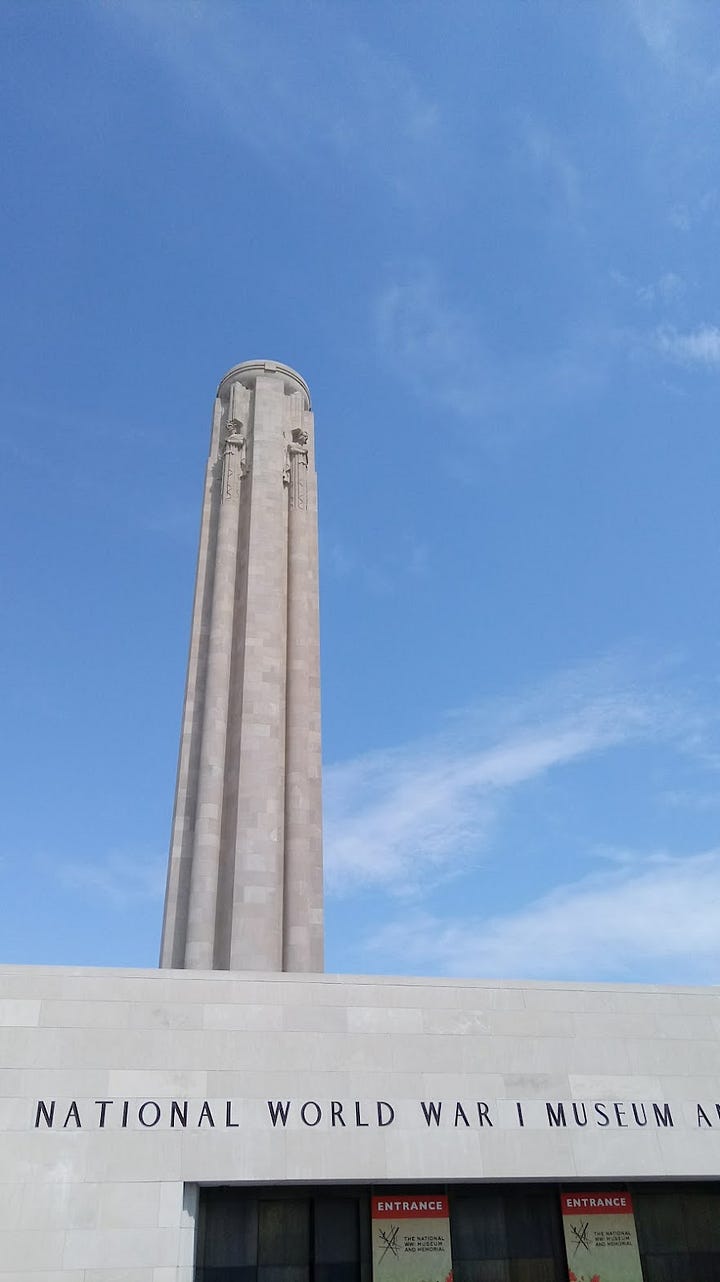
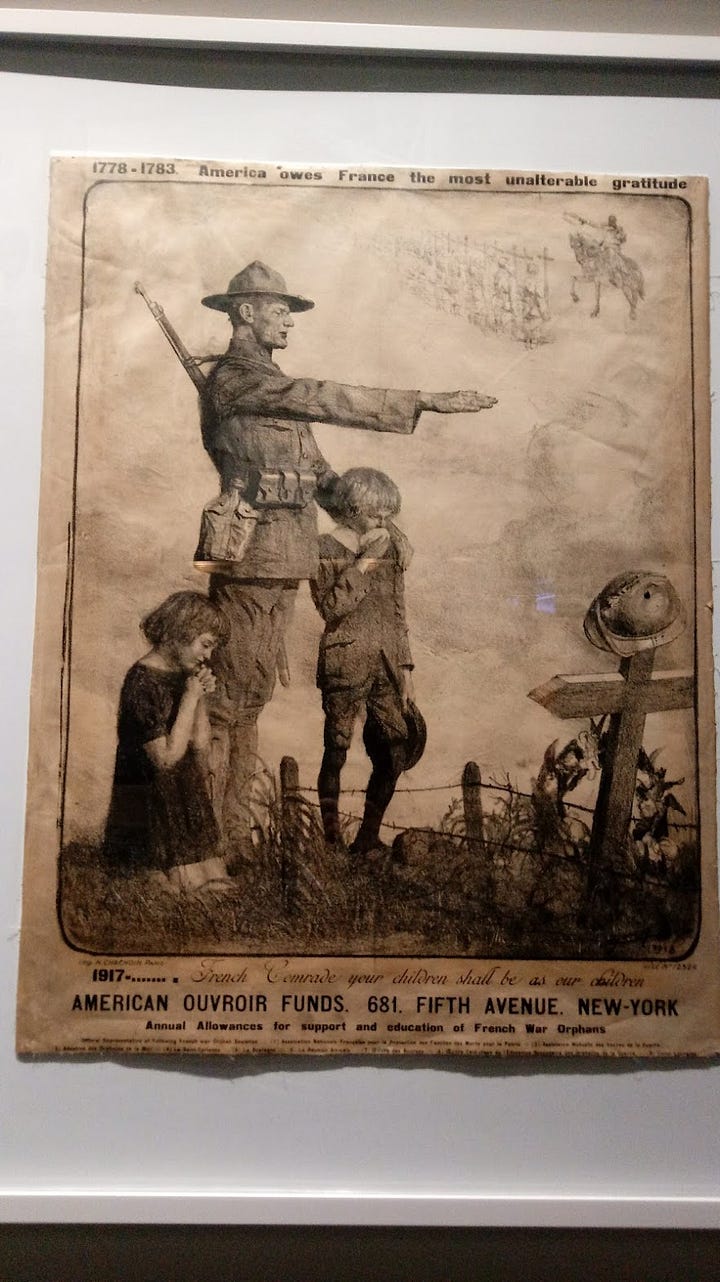
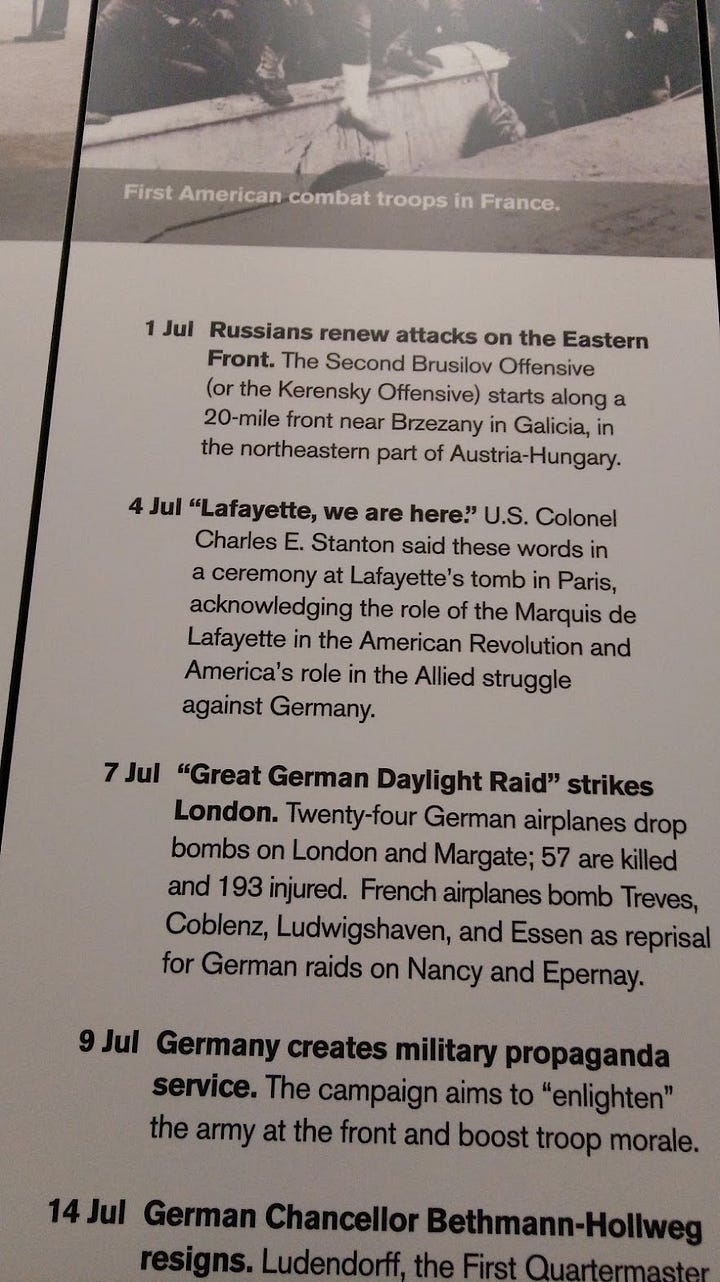
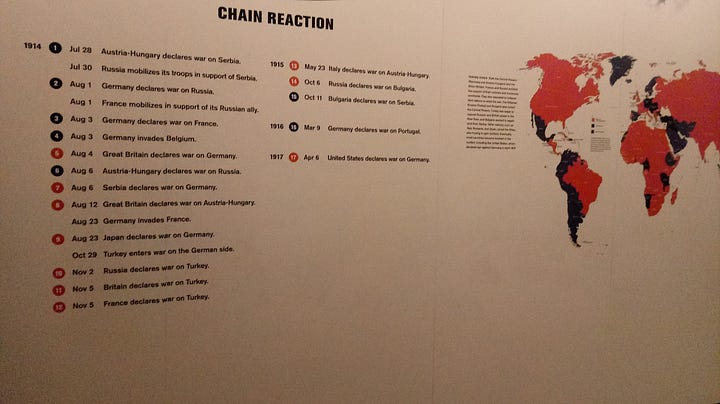
Riveting, huh? Why, why, oh WHY didn’t I take any better pictures?!?
My lack of photos is really a shame, because the space is incredibly striking. The walkways, paths, and perfectly manicured lawns leading up to the limestone Liberty Memorial Tower and the museum underneath evoke Washington D.C. vibes for their granduer. If you go up to the top of Liberty Tower you can see the Kansas City skyline.
Apparently. I didn’t do this :(
Man, writing this post really makes me want to go back to Kansas City and do this museum justice.
I remember wanting to bring all my students here. Any map, photograph, timeline, or propaganda poster could be a whole lesson in and of itself. There are also replica trenches, audio files to listen to, and theatres with documentaries to view.
In 2004, the Museum and Memorial was designated by Congress as the nation’s official World War I Museum. Kansas City is so cool.
Happy teaching, traveling, and reading! See y’all next Sunday.
Affiliate book links in this newsletter are through Bookshop, a book-buying platform that gives independent bookstores tools to compete online and maintain their presence in local communities. If you purchase books via the links in this newsletter, you’ll are financially supporting me AND your local independent book store, so thank you!
Page 107 in TO END ALL WARS

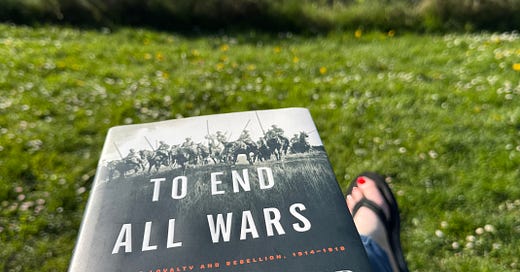


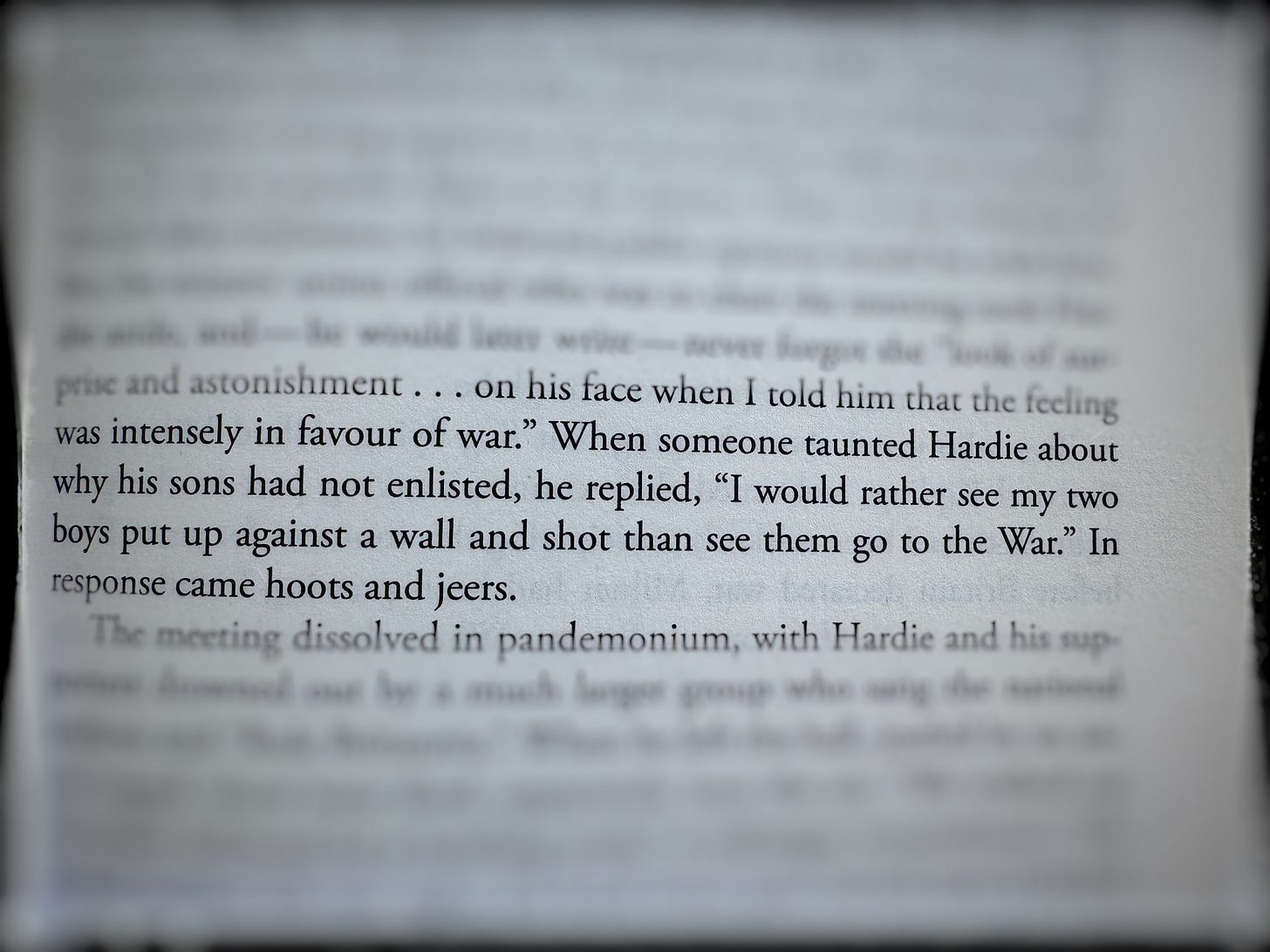

This is such a clever and simple way to give students practice analyzing quotes! I’m saving this post to use with my students next year.
Great information for how to put this together. Thank you!